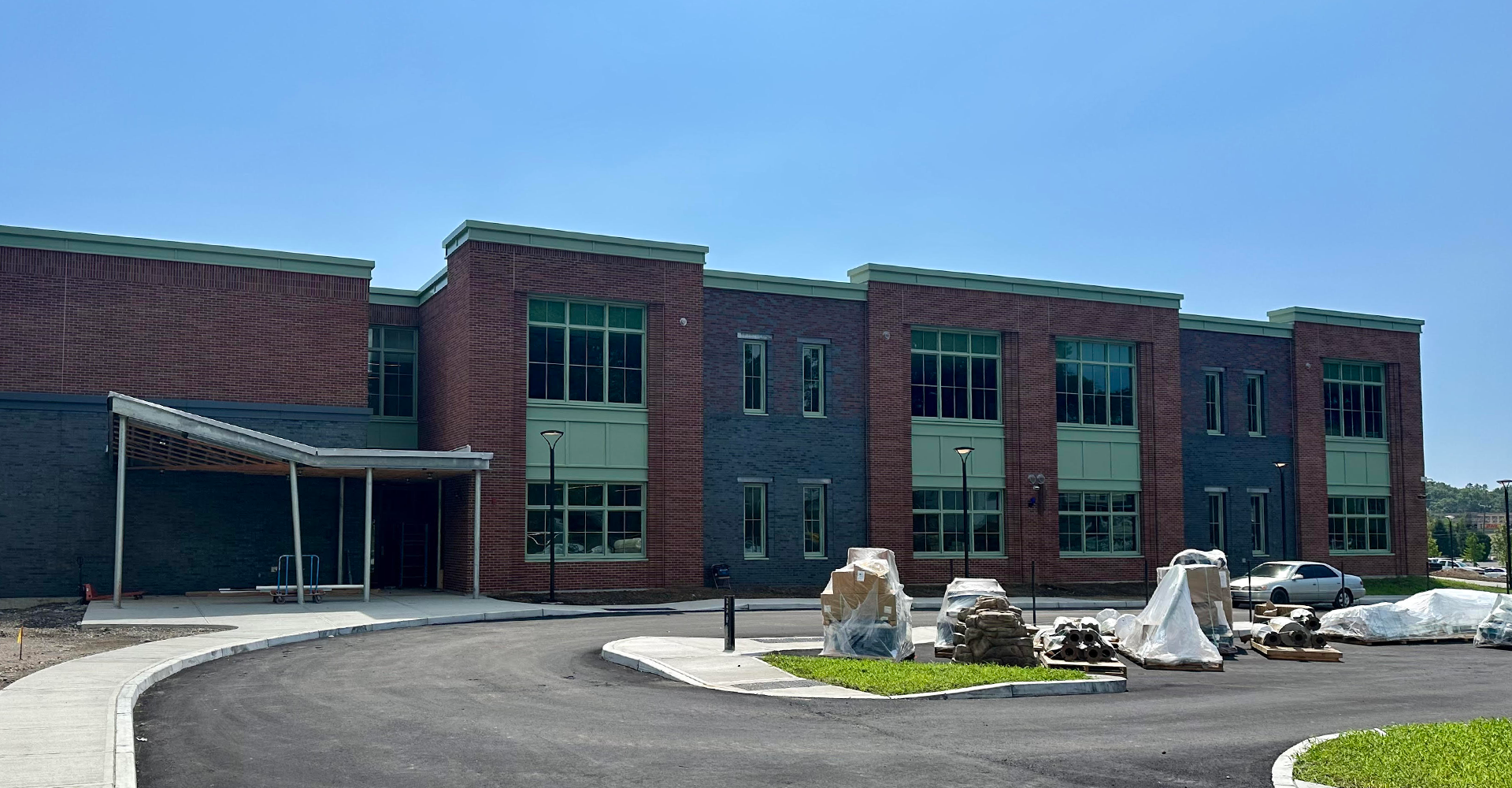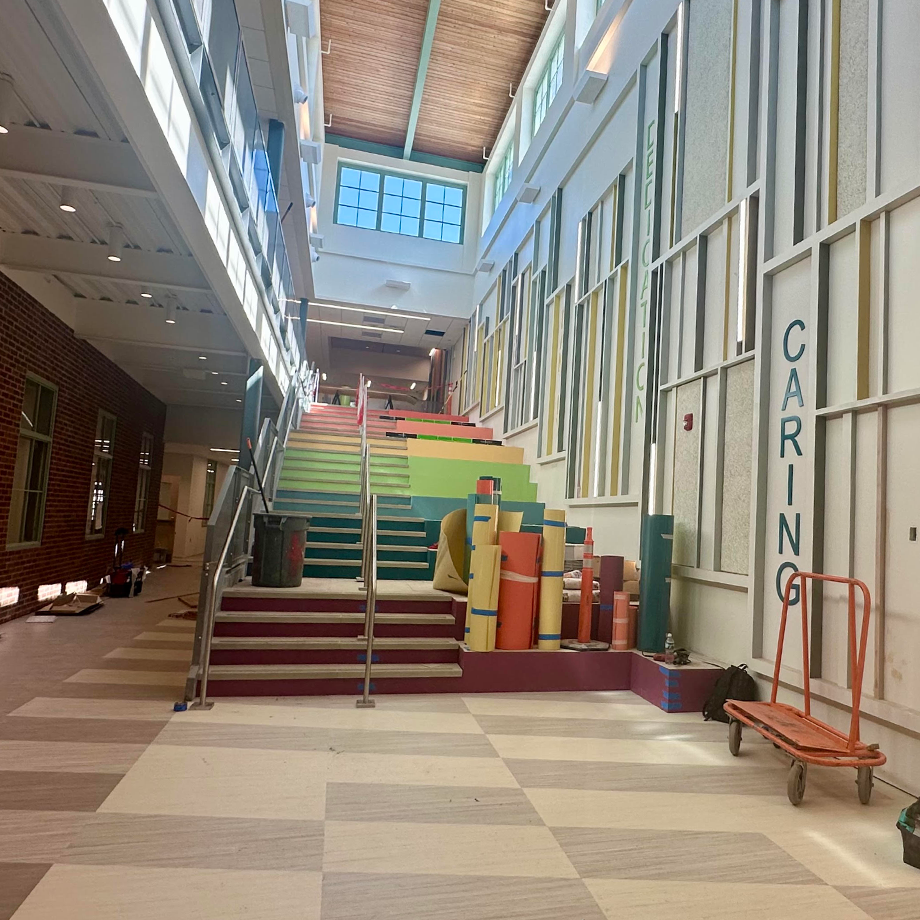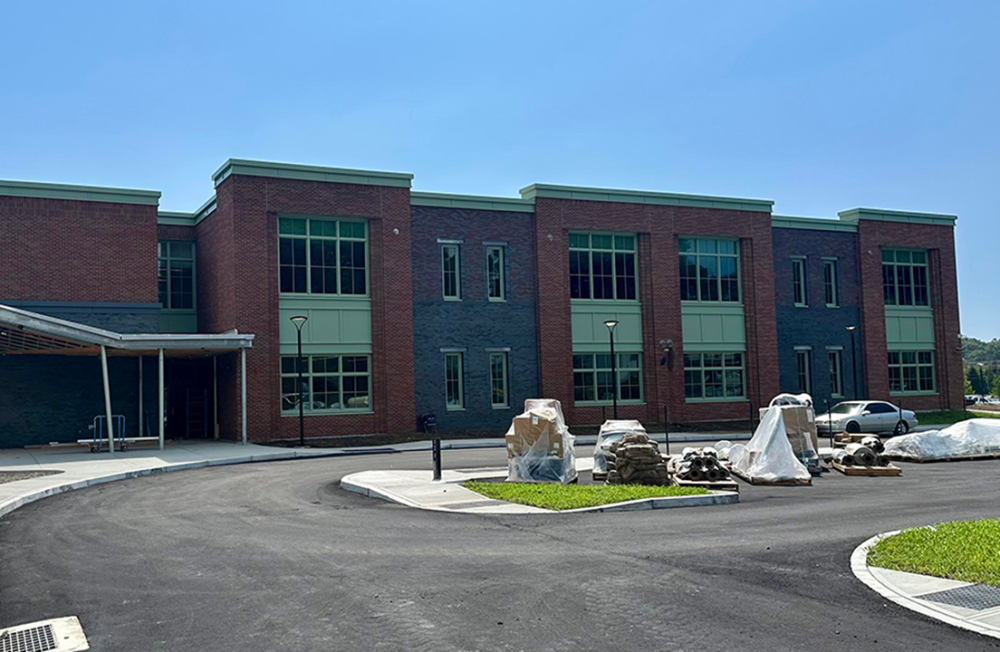The Heat is On: Preparing for FF&E in School Construction Projects
September 16th, 2025

When a new school year begins, students, teachers, and staff expect to walk into a fully functional, welcoming building. That means the furniture, fixtures, and equipment—commonly referred to as FF&E—must be installed, tested, and ready to go. In school construction projects, the FF&E phase often lands in the summer months, making it one of the most critical and time-sensitive parts of the process.
Few know this better than Eileen Eagle, Project Manager at Construction Solutions Group (CSG). With a background in corporate real estate, she first learned the intricacies of FF&E by managing interior buildouts, gaining hands-on experience with everything from furniture selection to logistics. More recently, she assisted with the FF&E process for the new South Norwalk School, guiding the project from showroom visits to the final installation.
“Furniture delivery doesn’t always wait for you to finish paving,” says Eileen. “You have to be ready. That means the building needs to be clean, accessible, and properly staged, and it is best to have both a plan A and a plan B.”
What is FF&E and Why It Matters
FF&E includes everything from student desks, lab benches, and library shelving to whiteboards, filing cabinets, and cafeteria tables. These movable assets aren’t part of the structure itself, but they are essential to creating a safe, functional, and engaging learning environment.

In today’s schools, FF&E choices go far beyond aesthetics. Furniture must be durable enough to withstand heavy daily use, adaptable to support collaborative and independent learning, and ergonomic to enhance comfort and focus.
Technology integration is also increasingly important, with charging stations and power access designed directly into desks and tables.
“Schools need furniture that’s flexible,” Eileen explains.
“It has to serve multiple purposes—whether that’s for group projects, quiet study, or just making it easier for custodial staff to clean. Something as simple as stackable chairs can make a big difference.”
Planning Ahead
For CSG, successful FF&E coordination starts months before trucks arrive at the site. Eileen emphasizes the importance of involving the right professionals early: “It’s best to work with a dealership and the architect. For new schools or major renovations, staff will often visit showrooms to try out furniture. Having an architect create a color board helps narrow down choices that can otherwise feel overwhelming.”
That planning stage should also involve administrators, facilities teams, and IT departments. For example, choosing the right finishes—laminate versus veneer, vinyl versus fabric—not only affects look and feel but also durability and maintenance. Considering student growth and varying sizes ensures that furniture fits users over time. Even small details matter. “In administrative areas, I always recommend keying filing cabinets alike,” Eileen notes. “It makes life a lot easier for staff. Those types of suggestions are things that you don’t immediately think about, but are no less essential.”
Tackling Delivery Logistics
The true crunch time for FF&E is delivery and installation, which often falls during the summer. Everything must be coordinated around the final stages of construction. If the main entrance isn’t complete or elevators aren’t available, deliveries can grind to a halt.
“Simple things—like posting floorplans on classroom doors—save time and headaches,” says Eileen. “Delivery crews can see exactly where furniture goes. You also need staging areas ready, rooms clean, and clear communication about where trucks can unload. If a driveway is still being paved, you need an alternate plan.”
Helping Owners Prepare
Eileen stresses that owners play a key role in a smooth FF&E process. Clear communication and early involvement are crucial. “Owners should be made aware of the schedule well in advance,” she explains. “That means knowing when furniture is coming, when to start purging old items, and how to coordinate staff moves.”
Move meetings can begin up to six months before delivery for larger projects. These sessions cover everything from labeling and color-coding existing furniture to deciding who will pack and handle IT equipment or library books. “Each time you do one of these projects, you always take away a lesson learned,” Eileen reflects.
More than just Furniture
At its core, the FF&E phase is about a lot more than simply installing desks and chairs. The goal is to create a safe, adaptable, and inspiring environment where students and staff can thrive from day one. With careful planning, strong communication, and attention to detail, the chaos of summer installations transforms into a seamless first day of school.
“Communication is the key to everything,” says Eagle. “When everyone is on the same page—owners, architects, contractors, and movers—that’s when it all comes together.”



